Considering normal incidence of ray, the equivalent refractive index of combination of two slabs shown in Fig. is.
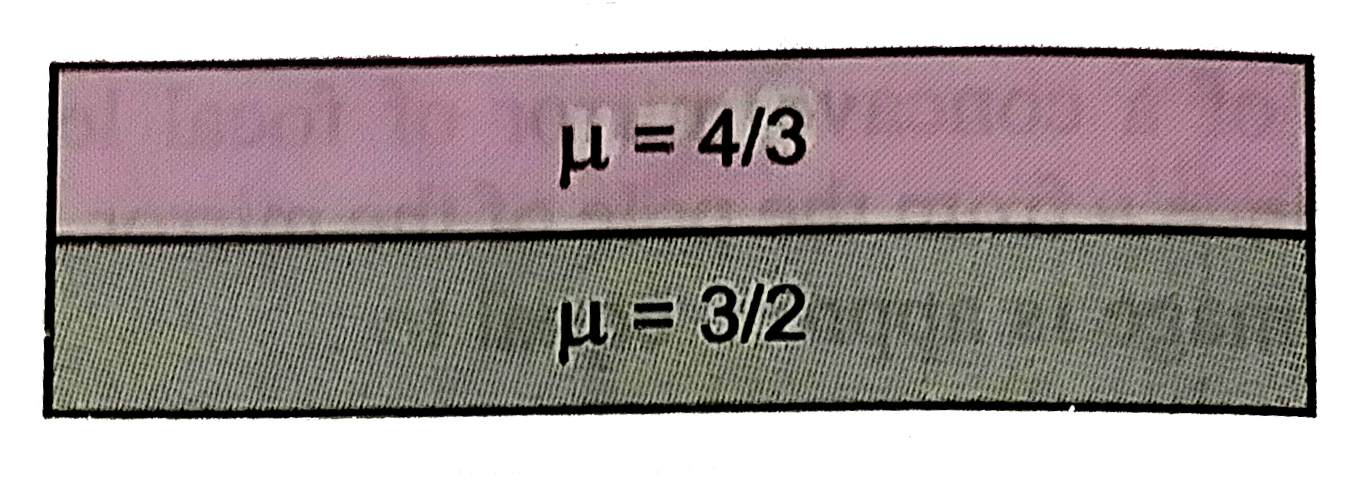 .
.
1.8
1.43
2
None oof the above
The correct Answer is:B
Step by step video, text & image solution for Considering normal incidence of ray, the equivalent refractive index of combination of two slabs shown in Fig. is. . by Physics experts to help you in doubts & scoring excellent marks in Class 12 exams.
Updated on:21/07/2023Topper's Solved these Questions
Similar Questions
Lateral displacement of ray passing through a glass slab
A ray of light is incident on a parallel sided glass slab of refractive index n and thickness t as shown in Fig. 34-2. Find the lateral displacement of the ray as it passes through the slab.
View SolutionA ray of light is incident on a glass slab at grazing incidence. The refractive index of the material of the slab is given by μ=√(1+y) . If the thickness of the slab is d=2m, determing the equation of the trajectory of the ray inside the slab and the coordinates of the point where the ray exits from the slab. Take the origin to be at the point of entry of the ray.
View Solution
Knowledge Check
Considering normal incident of ray, find equivalent refractive index of combination of two slabs shown in figure.
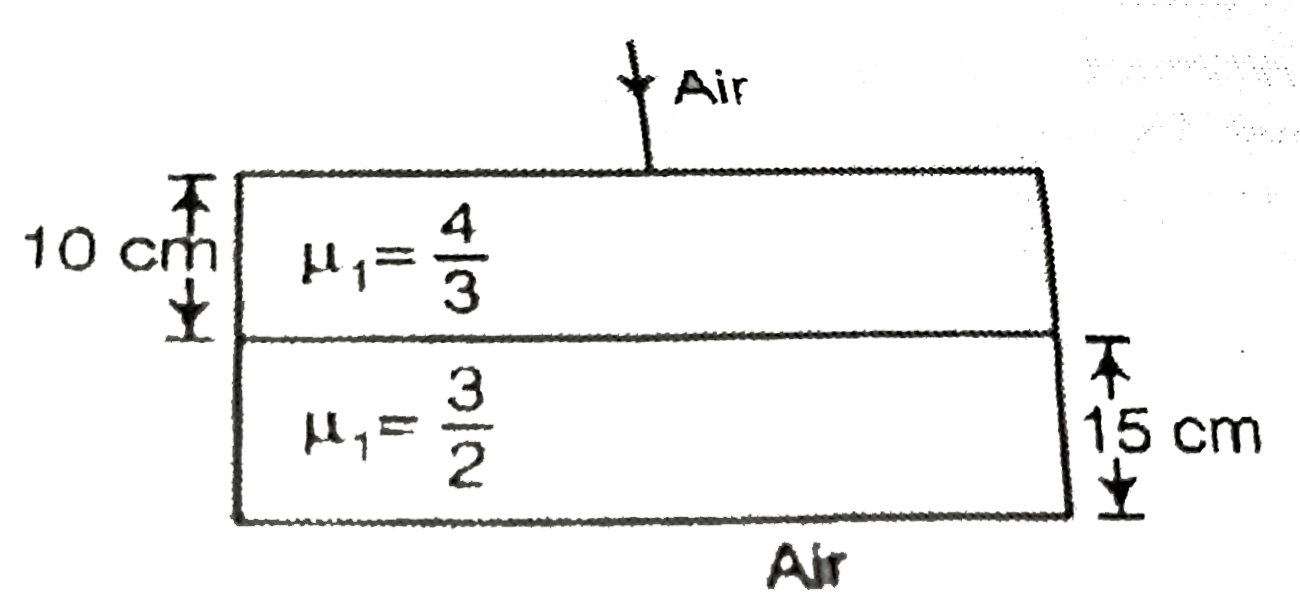 A1.8B1.43C2Dnone of these
A1.8B1.43C2Dnone of theseIn a vessel two insoluble liquids are filled as shown in the figure. The effective refractive index of the combination for normal view is
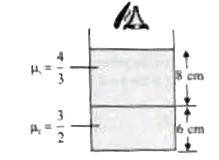 A1.33B1.5C1.67D1.4
A1.33B1.5C1.67D1.4When a ray of light is incident normally on one refracting surface of an equilateral prism (Refractive index of the material of the prism =1.5
AEmerging ray is deviated by 30BEmerging ray is deviated by 45∘CEmerging ray just grazes the second refracting surfaceDThe ray undergoes total internal reflection at the second refracting surface
A ray of light is incident on a glass slab at grazing incidence. The refractive index of the material of the slab is given by μ=√1+√y. If the thickness of the slab is d, determine the equation ofthe trajectory of the ray inside the slab and the coordinates of the point where the ray exits from the slab. Take the origin to be at the point of entry of the ray.
View SolutionA ray PQ is incident normally on the face AB of a triangular prism of refracting angle 60°, made of a transparent material of refractive index 2√3 , as shown in Fig.
Trace the path of the ray as it passes through the prism. Also calculate the angle of emergence and angle of deviation.
View SolutionA light ray is incident on a plane glass slab of thickness ‘t’ at an angle of incidence ‘i’ as shown in the figure. If μ is the refractive index of glass. Then find time taken by the light ray to travel through the slab.
View SolutionA light ray is incident on a glass sphere of reflective index μ=√3 at an angle of incidence 60∘ as shown in Fig. Find the angles r, r′ e and the total deviation after two refractions.
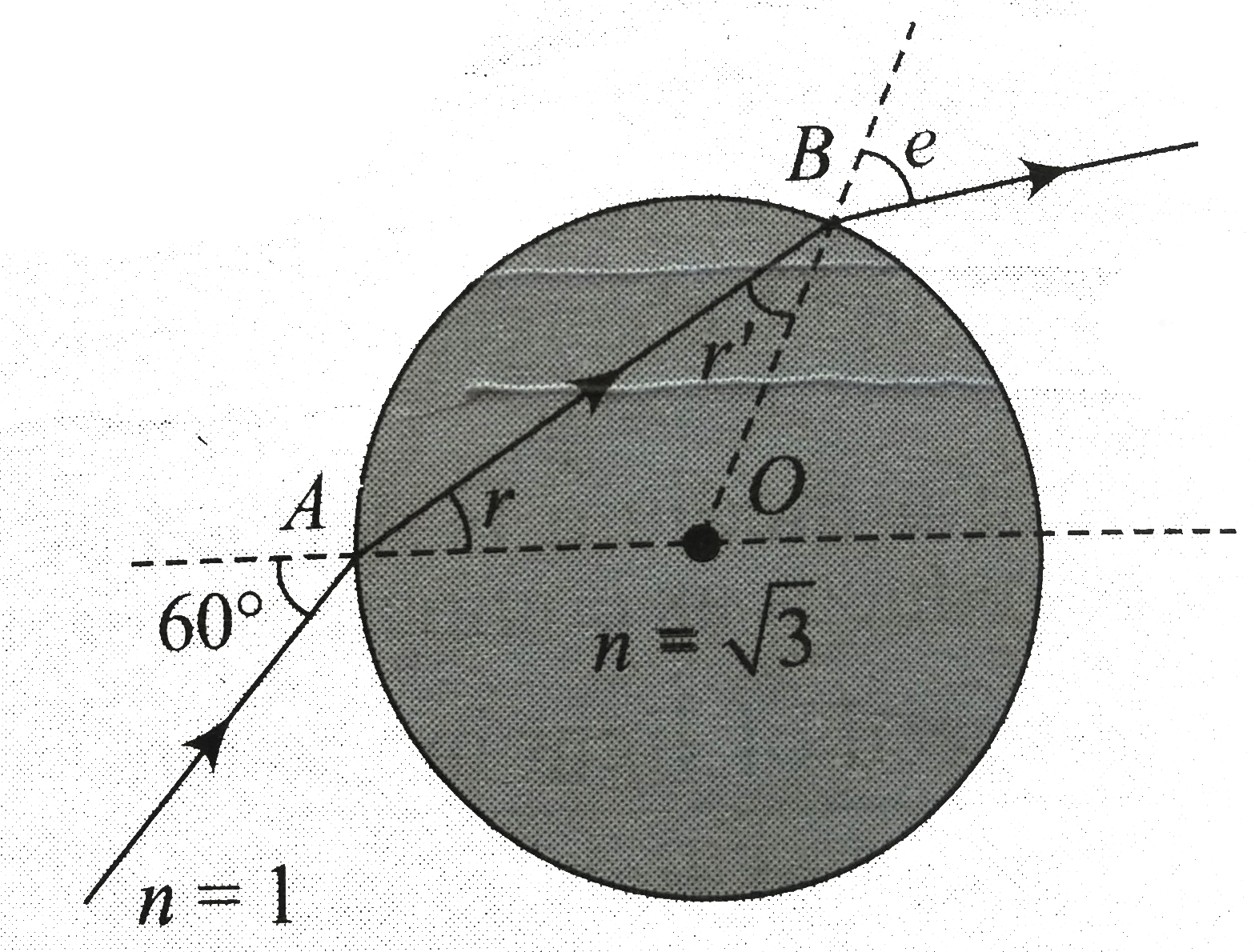
View Solution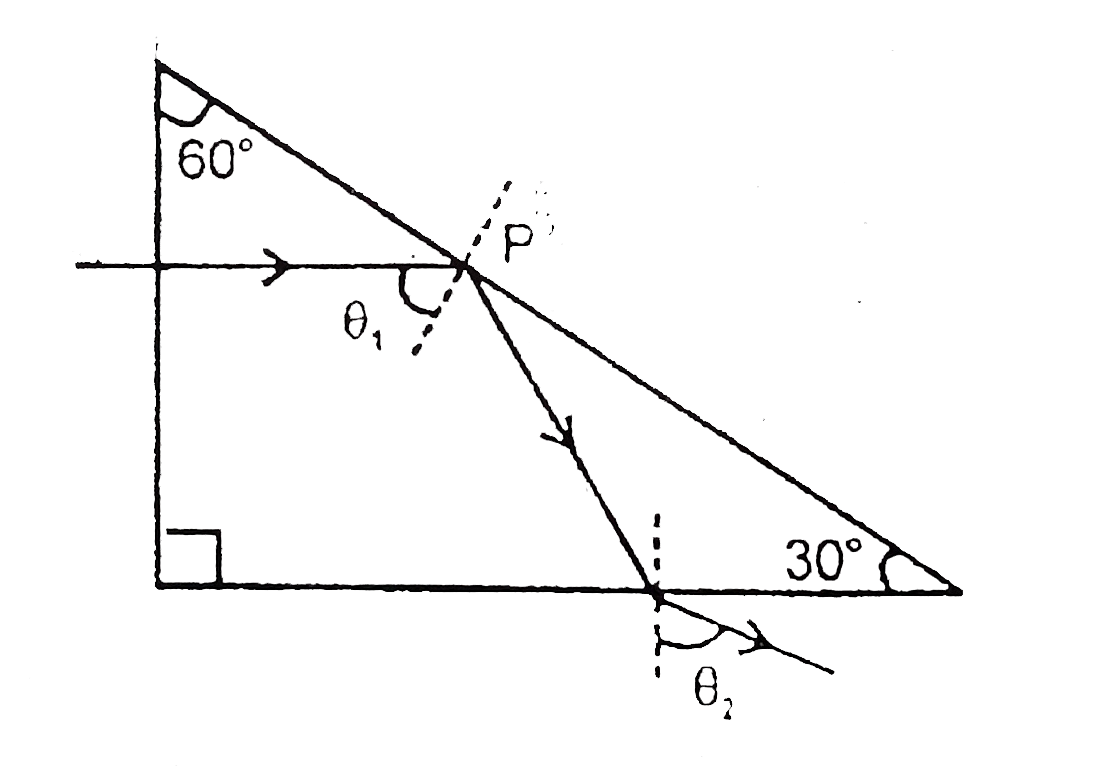
A ray of light is incident normally on one face of a prism as shown in figure. The refractive index of the material of the prism is 53 and the prism is immersed in water of refractive index 43, then
View Solution
